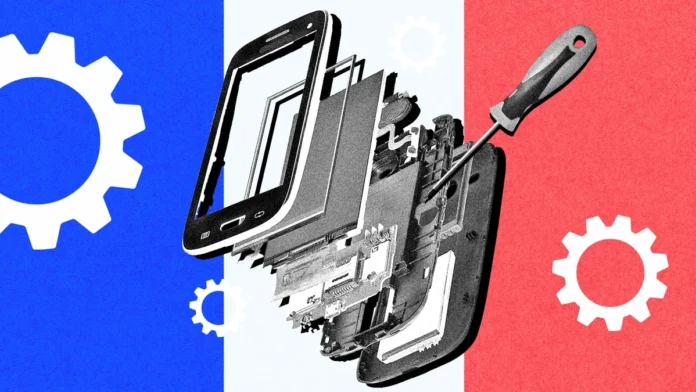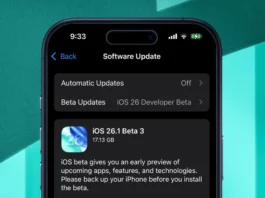Okay, let’s be real. We live in a world of gadgets. Shiny, new, and often… disposable. But what happens when your fancy smartwatch or those ridiculously cool smart glasses break? That’s where the concept of repairability comes in, and it’s becoming a bigger deal than you might think. The latest news highlighting iFixit’s repairability scores for the Pixel Watch 4 and Meta Ray-Ban glasses shines a light on a crucial, yet often overlooked, aspect of consumer electronics: can we actually fix them ourselves, or are we doomed to replace them?
The Repairability Divide | Why It Matters

The difference between a high repairability score and a low one isn’t just about convenience; it’s about sustainability, consumer rights, and even economic empowerment. Think about it: a device that’s easy to repair means fewer gadgets ending up in landfills, less e-waste polluting our environment, and more money staying in our pockets. I mean, who wants to shell out for a brand-new device every time a screen cracks or a battery dies? The rise of consumer awareness regarding the right to repair is not just a trend; it’s a necessity. It’s about pushing manufacturers to design products that are built to last and can be easily fixed.
But why is there such a stark contrast between the Pixel Watch 4 and the Meta Ray-Ban glasses ? That’s where the analysis gets interesting. It all boils down to design philosophy, manufacturing processes, and, let’s be honest, a bit of corporate strategy. Some companies prioritize sleek aesthetics and tight integration, often making their devices incredibly difficult to disassemble and repair. Others, like Google seems to be with the Pixel Watch 4, are taking a more consumer-friendly approach, designing their products with repairability in mind. Here’s the thing: it’s not just about making it possible to repair a device, but also about making the necessary parts and information readily available to consumers and independent repair shops.
Inside iFixit’s Repairability Score | What It Tells Us
So, how does iFixit come up with these scores anyway? It’s not just a random number they pull out of a hat. Their team of teardown experts meticulously disassembles each device, evaluating factors like the ease of access to internal components, the type of adhesives used, the availability of replacement parts, and the complexity of the repair process. A higher score indicates that the device is relatively easy to repair, while a lower score suggests that it’s a nightmare to take apart and fix. These scores serve as a valuable benchmark for consumers, helping them make informed purchasing decisions based on the long-term viability of the products they buy. A common mistake I see people make is ignoring these repairability scores, focusing solely on features and aesthetics. But in the long run, a device with a high repairability score can save you a lot of money and frustration.
Meta’s ‘Unrepairable’ Glasses | A Sign of the Times?
Let’s be honest – Meta’s Ray-Ban glasses being deemed ‘unrepairable’ isn’t exactly shocking. These devices are often packed with tiny, delicate components, glued together with industrial-strength adhesives, and designed with little regard for repairability. This approach not only frustrates consumers but also contributes to the growing e-waste problem. When devices are impossible to repair, they’re more likely to end up in landfills, where they can leach harmful chemicals into the environment. This is where sustainable electronics comes into play.
The trend of designing devices that are difficult to repair is a worrying one, and it’s something that needs to be addressed. Consumers have the right to repair their own devices, and manufacturers have a responsibility to make that possible. Perhaps regulations are needed to push the industry towards more repair-friendly designs. A step in this direction is the EU’s push for more sustainable and repairable products here .
The Pixel Watch 4 | A Beacon of Hope for Consumer Electronics?
On the other hand, the Pixel Watch 4 receiving a high repairability score is a positive sign. It suggests that Google is taking a different approach, prioritizing repairability and consumer empowerment. This could set a new standard for the industry, encouraging other manufacturers to follow suit. What fascinates me is the potential for this to shift the entire market. If more consumers start demanding repairable devices, manufacturers will have no choice but to listen. This could lead to a new era of sustainable electronics, where products are designed to last and can be easily fixed.
And it’s not just about the design. Making replacement parts readily available and providing clear repair documentation are also crucial steps. If you can’t get the parts you need, or if you don’t know how to perform the repair, a high repairability score doesn’t mean much. The one thing you absolutely must consider is the availability of independent repair shops. These shops play a vital role in keeping devices out of landfills, and they need access to the parts and information they need to do their job effectively. I initially thought this was straightforward, but then I realized the importance of collaboration between manufacturers and independent repair providers.
Beyond Repairability | The Bigger Picture
The debate around repairability goes far beyond individual devices. It’s about the entire ecosystem of consumer electronics and the impact it has on our environment and our wallets. By demanding repairable devices, we’re not just saving money; we’re also sending a message to manufacturers that we value sustainability and consumer rights. And let’s not forget the e-waste management aspect. What happens to your old phone when you upgrade? A significant portion of electronic waste ends up in landfills or is shipped to developing countries, where it’s often processed in unsafe conditions. Choosing repairable devices is one small step we can take to reduce our contribution to this problem.
This is also where the concept of circular economy comes into play. A circular economy aims to minimize waste and maximize the lifespan of products. Repairability is a key component of this model, as it allows us to keep devices in use for longer, reducing the need for new products and minimizing waste. It’s a win-win situation for consumers, manufacturers, and the environment. As per the guidelines mentioned in various industry reports, transitioning to a circular economy model requires a collective effort from all stakeholders, including manufacturers, consumers, and policymakers. But, the future of technology depends on sustainable practices.
Ultimately, the news about the Pixel Watch 4 and Meta Ray-Ban glasses is a reminder that we have a choice. We can continue to support manufacturers who prioritize profits over sustainability, or we can demand better. We can choose devices that are designed to last and can be easily repaired, or we can contribute to the growing e-waste problem. The choice is ours, and it’s a choice that will have a significant impact on the future of our planet.
FAQ
What does a good repairability score mean?
A good repairability score indicates that a device is relatively easy to disassemble, repair, and reassemble, with readily available parts and repair documentation.
Why is repairability important for consumers?
Repairability saves consumers money by extending the lifespan of their devices and reducing the need for frequent replacements. It also promotes sustainability by reducing e-waste.
How can I find out the repairability score of a device before buying it?
Check iFixit’s website or other tech review sites that evaluate the repairability of electronic devices.
What can I do to support the right to repair movement?
Support legislation that promotes repairability, choose repairable devices when making purchases, and patronize independent repair shops.
Are there any downsides to repairing my own devices?
Yes, you may void the warranty or damage the device further if you lack the necessary skills or tools. It’s essential to assess your capabilities and consult professional repair services when needed.
What about data privacy when repairing a device?
Always back up your data before attempting any repairs and ensure that the repair service has a clear privacy policy in place.
And remember, it’s not just about the gadgets themselves. It’s about the principles behind them. It’s about demanding a future where technology serves us, not the other way around. It’s about shaping a more sustainable and equitable world , one repairable device at a time.



